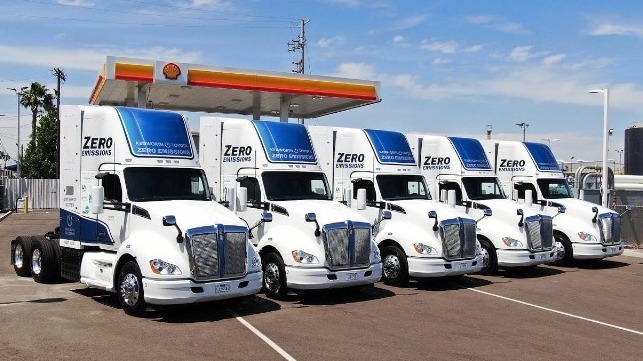America's Ports Want to Decarbonize, But Cost & Grid Power Remain Hurdles

The American Association of Port Authorities has completed a survey of its members' decarbonization efforts, in cooperation with ABS. The responses reveal that most U.S. ports have plans to reduce their emissions, often driven by internal commitment to change their operations - but challenges remain.
All of AAPA's member ports were surveyed, and 29 ports and terminals responded to the questionnaire. Two out of three respondents said that they have formal goals to decarbonize their operations; many in the remaining one-third were small ports, with fewer resources to make plans for such a large-scale change.
The biggest hurdles identified in the survey were the expense of decarbonization, low readiness of new technology, and limits on the performance of green equipment. "Compared to traditional equipment, decarbonized alternatives require significant investments to pilot, demonstrate proof of concept and certify operational viability," the survey found.
Federal grant funding has helped to bridge some of the cost gap. Diesel Emissions Reduction Act grants, Port Infrastructure Development Program, the Marine Highway Program and other funding sources have all been used to support decarbonization projects in seaports. More than 70 percent of respondents also tapped state and local funding programs to help support green improvements.
Each port's working relationship with its local electric utility has a great deal of bearing on cost, since the grid power supply infrastructure is among the most expensive parts of decarbonizing a seaport through electrification. Most respondents expect that their power needs will increase more than fivefold within a decade.
Shore power is a big part of that power demand picture, and about 40 percent of all respondents said that they plan to have cold-ironing connections for some or all vessel classes in the future. The supply generally has to come from the grid, and only about 25 percent of respondents said that they plan to make the majority of their own power locally, using renewables like solar.
"The relationship between utility and port is absolutely critical to building out new electrification projects," found AAPA. The association recommends establishing formal relationships between seaports and local utilities, including official policies on net metering to incentivize renewables installation. Utility operators also need to understand that ports do not yet know their future electrical demand with high precision, AAPA said. Many utilities will not start construction or even begin planning for grid improvements until they have an exact number for the customer's future power needs, and this will need to change if decarbonization is to move ahead at pace, according to AAPA.
Space constraints are also a significant challenge: square footage is at a premium at a busy cargo terminal, and charging locations take up more room. More than half of all the respondents reported that spare space was a barrier to adoption of electric or alternative-fueled vehicles.
"The port and maritime industries are advancing at a rate not seen perhaps since the advent of containerization. If one thing is clear, America’s port professionals are dedicating immeasurable hours and attention to port decarbonization, and the future of this field contains immense opportunities," AAPA concluded.
No comments:
Post a Comment